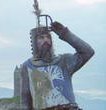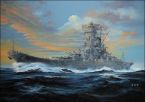jwilkerson
Posts: 10525
Joined: 9/15/2002
From: Kansas
Status: offline

|
quote:
ORIGINAL: Andrew Brown
To provide a bit of explanation to help with this discussion (I hope):
SPS is indeed about maximum potential, not actual (historical) airfield size/number. But it is more than that - I also try to use SPS to represent difficulty of construction. This means that, for example, it should be harder to build airfields in remote rugged jungle terrain than in "developed" plains with good road/railway networks present. In the rough jungle terrain both construction and transport of materials will be harder. The only way to represent this is to use a lower SPS value for the rough/jungle hex, so that the much more costly "above SPS" values (from SPS to SPS+3) are reached earlier.
So the SPS value of the land and coastal hexes in AE are determined from a combination of terrain, presence of roads/railways and, for islands, island size.
Island size is included because, all things being equal, there is more potential to build lots of large airfields in a 3000 square mile area of flat land than on an island of, say, 40 square miles.
What all this means is that, unfortunately, in AE we only have this one value - SPS - being used to represent two things, potential maximum airfield development and difficulty of construction, so there are inevitable compromises. Again for example, a remote jungle (flat, not rugged) hex could, theoretically, be used to house as many airfields as a developed hex, assuming that sufficient construction effort was brought to bear. But because the jungle hex has a lower SPS value to represent difficulty of construction, the maximum airfield size will actually be lower.
Many things in AE are about compromises and this is one of them. As I mentioned above I think it is the comparison of sortie rates from bases such as Tinian with Real Life data that is the key. I am happy to revisit SPS allocation to bases if there is a problem that needs to be addressed. I did do some testing of Tinian a long time ago (early on in the development of AE) because it is an "outlier" of sorts - a fairly small island that housed a lot of 4E bombers, and I was also able to launch some big raids, so it looked OK to me, but more data from testing or game play is always welcome and won't be ignored.
Andrew
To be brutally simple about this - the US could have built a level-9 (almost) anywhere they wanted to - ok maybe not on the top of Mt Everest  it was just about priorities and resources. Due to the distance from the Marianas to Japan and the B-29 range - the capture of the Marianas and the B-29s were linked from before the operation was approved. Arnold and King forged an alliance over this one because it met the needs of both. The B-29s would be based in the Marianas if the US had to build a whole'nother Island to put them on! it was just about priorities and resources. Due to the distance from the Marianas to Japan and the B-29 range - the capture of the Marianas and the B-29s were linked from before the operation was approved. Arnold and King forged an alliance over this one because it met the needs of both. The B-29s would be based in the Marianas if the US had to build a whole'nother Island to put them on!
But in the game the "size" of an airfield means more than how big are its runways - so when we decide how large to allow a "runway" to be in the game, we must consider the "definiion" of an airbase as determined by the code - not necessarily what we think it is in real life. This is what really drives the compromises Andrew talks about.
For those who want to experiment - the editor awaits!!! 
_____________________________
AE Project Lead
New Game Project Lead
|
 Printable Version
Printable Version














 New Messages
New Messages No New Messages
No New Messages Hot Topic w/ New Messages
Hot Topic w/ New Messages Hot Topic w/o New Messages
Hot Topic w/o New Messages Locked w/ New Messages
Locked w/ New Messages Locked w/o New Messages
Locked w/o New Messages Post New Thread
Post New Thread